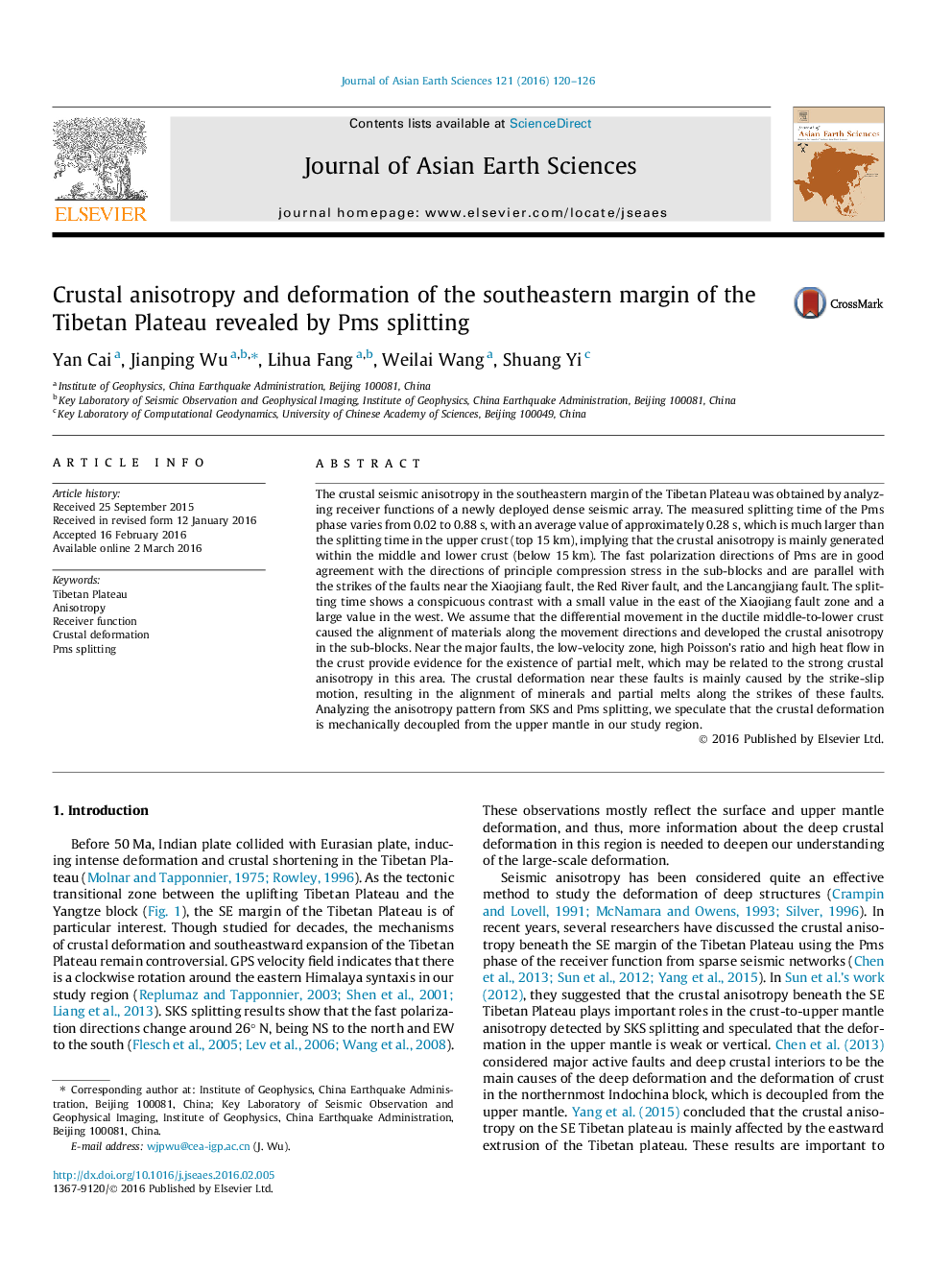| کد مقاله | کد نشریه | سال انتشار | مقاله انگلیسی | نسخه تمام متن |
|---|---|---|---|---|
| 4730074 | 1640350 | 2016 | 7 صفحه PDF | دانلود رایگان |

• The crustal anisotropy is primarily generated within the middle and lower crust.
• The differential movement may cause the anisotropy in the middle and lower crust.
• The crustal deformation near the faults mainly result from the strike-slip motion.
The crustal seismic anisotropy in the southeastern margin of the Tibetan Plateau was obtained by analyzing receiver functions of a newly deployed dense seismic array. The measured splitting time of the Pms phase varies from 0.02 to 0.88 s, with an average value of approximately 0.28 s, which is much larger than the splitting time in the upper crust (top 15 km), implying that the crustal anisotropy is mainly generated within the middle and lower crust (below 15 km). The fast polarization directions of Pms are in good agreement with the directions of principle compression stress in the sub-blocks and are parallel with the strikes of the faults near the Xiaojiang fault, the Red River fault, and the Lancangjiang fault. The splitting time shows a conspicuous contrast with a small value in the east of the Xiaojiang fault zone and a large value in the west. We assume that the differential movement in the ductile middle-to-lower crust caused the alignment of materials along the movement directions and developed the crustal anisotropy in the sub-blocks. Near the major faults, the low-velocity zone, high Poisson’s ratio and high heat flow in the crust provide evidence for the existence of partial melt, which may be related to the strong crustal anisotropy in this area. The crustal deformation near these faults is mainly caused by the strike-slip motion, resulting in the alignment of minerals and partial melts along the strikes of these faults. Analyzing the anisotropy pattern from SKS and Pms splitting, we speculate that the crustal deformation is mechanically decoupled from the upper mantle in our study region.
Journal: Journal of Asian Earth Sciences - Volume 121, 1 May 2016, Pages 120–126